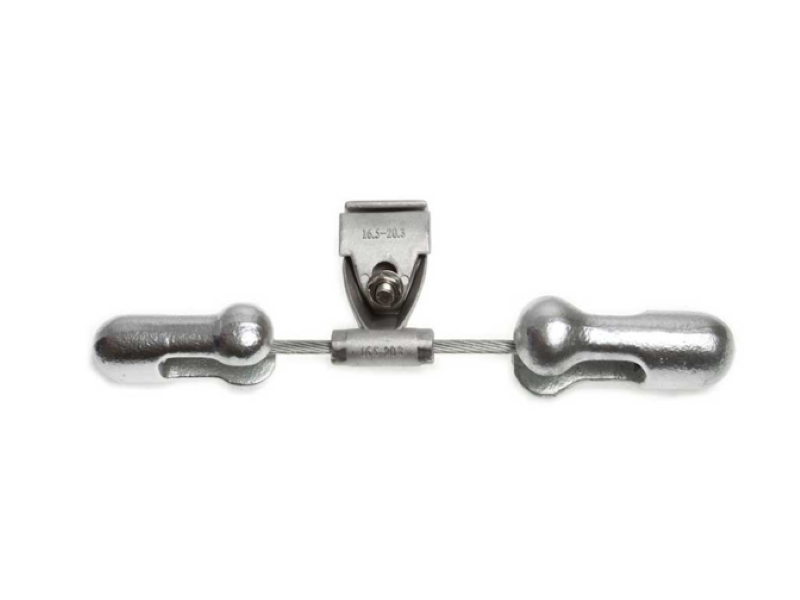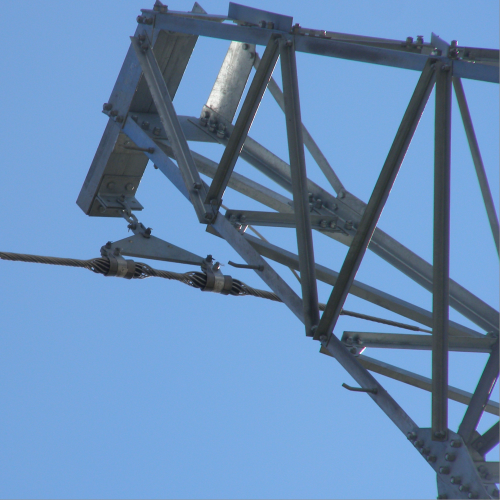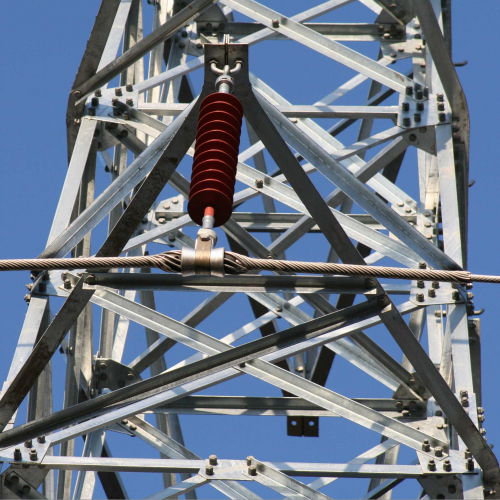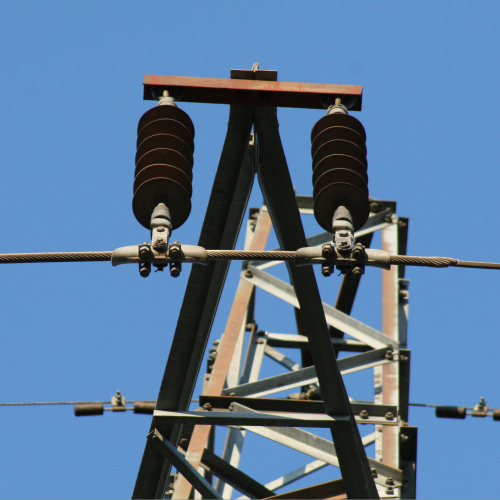Transmission lines are exposed to the natural environment for a long time, and wind vibration is one of the main threats to transmission lines. Breeze vibration is a high-frequency and low-amplitude vertical vibration generated by overhead wires under the action of breeze. The main characteristics of breeze vibration are high frequency, small amplitude, small required wind speed and long duration. Breeze vibration can cause major hazards such as fatigue and disconnection of overhead wires, wear of metal fittings, and wear or disconnection of ground wires at the outlet of the clamp. As an anti-vibration metal tool that can suppress the breeze vibration of transmission lines, supply vibration damper can play a role in maintaining the stability of the power grid.
Supply vibration damper consists of two heavy metal hammer heads and a steel strand in the middle. It is fixed to the wire through a wire clamp. When the wire vibrates, the hammer head vibrates in reverse due to inertia, and the vibration energy is transmitted and consumed through the steel strand to offset the original vibration energy of the wire and reduce the vibration amplitude.
Supply vibration damper has different installation rules in different application scenarios. On the kV circuit around the city, it is enough to hang a set every 50 meters. However, on long-span lines in places such as cross-river canyons, two sets of supply vibration dampers of different weights need to be installed. If it needs to be used by the sea, it must not be afraid of salt corrosion, and supply vibration damper made of zinc, aluminum alloy and other materials must be used. If it is in an alpine area, it is best to use a supply vibration damper made of carbon fiber material. On the basis of lightness and firmness, it will not loose due to large temperature differences.

After understanding the installation rules, maintenance is also a very important part of ensuring line safety. The frequency of regular inspections of supply vibration damper is generally carried out every six months, and harsh environments need to be inspected every three months. Inspections can observe the appearance through binoculars, or use drones to take pictures of the details. The focus is to check whether the hammer head is loose, whether the surface of the hammer is corroded, and if it is a seaside route, you also need to check whether the coating is intact. Then check whether the steel strand is broken or deformed. If there are more than three broken wires, it needs to be replaced immediately. Finally, check whether the clamp is corroded and the fastening condition is good. If the clamp is loose, it may cause the supply vibration damper to fail, and you need to tighten it again with a wrench. After the parts are inspected, it is necessary to observe whether the overall position of the supply vibration damper is offset. If the offset exceeds 5 cm or more, it needs to be adjusted and reset to prevent the damping from failing. If the supply vibration damper is found to be slightly corroded, it can be coated with anti-rust paint. If the supply vibration damper has been used for more than 15 years or the damping effect has decreased by more than 30%, the entire set needs to be replaced.




